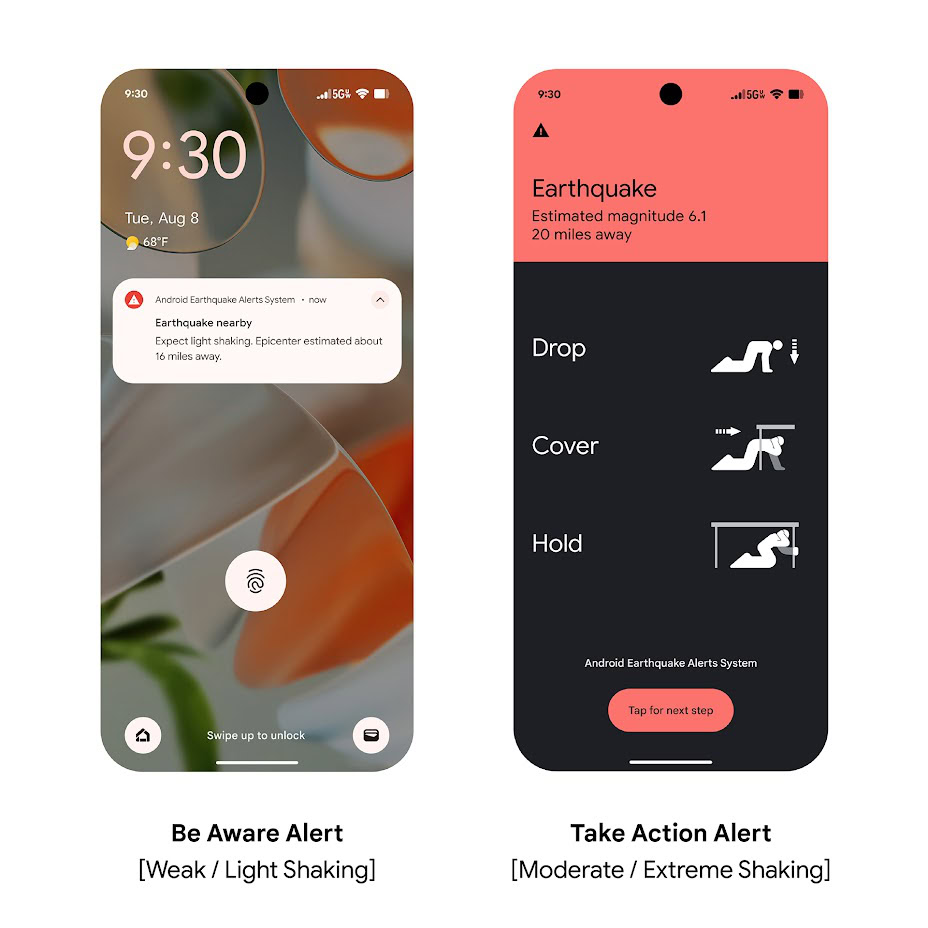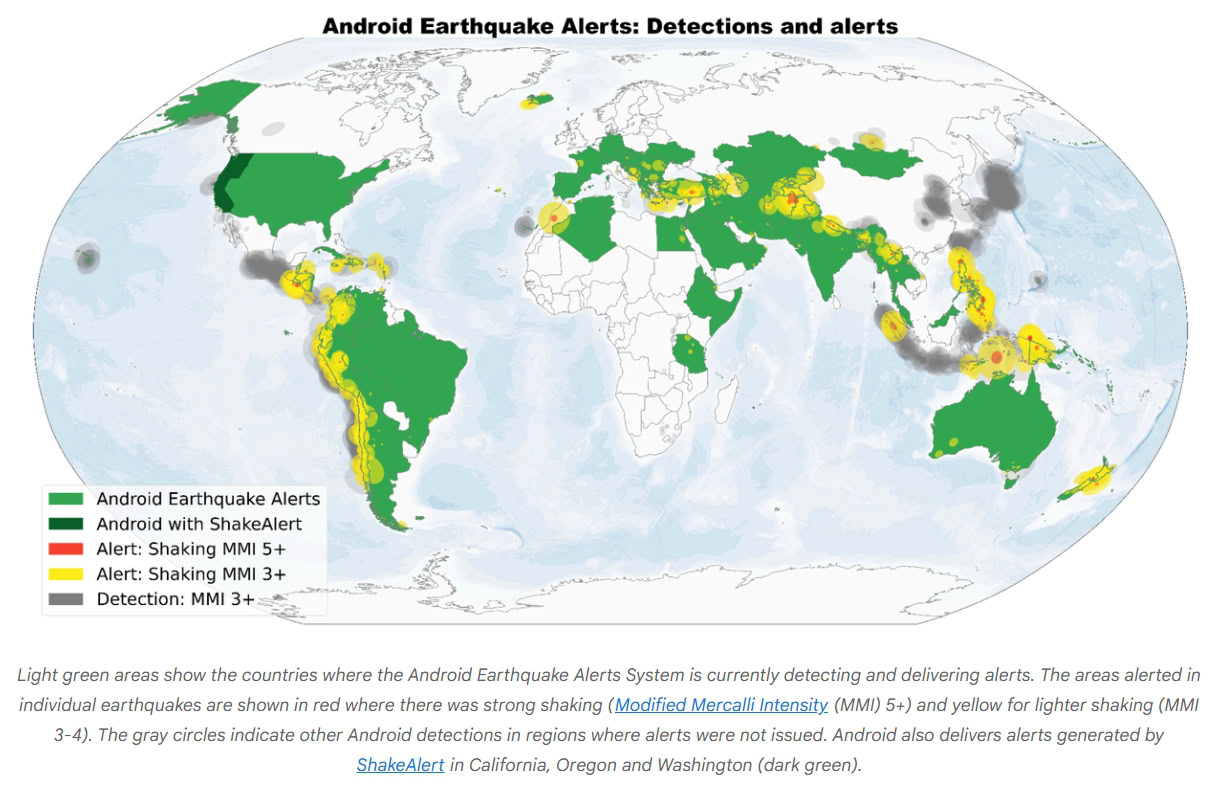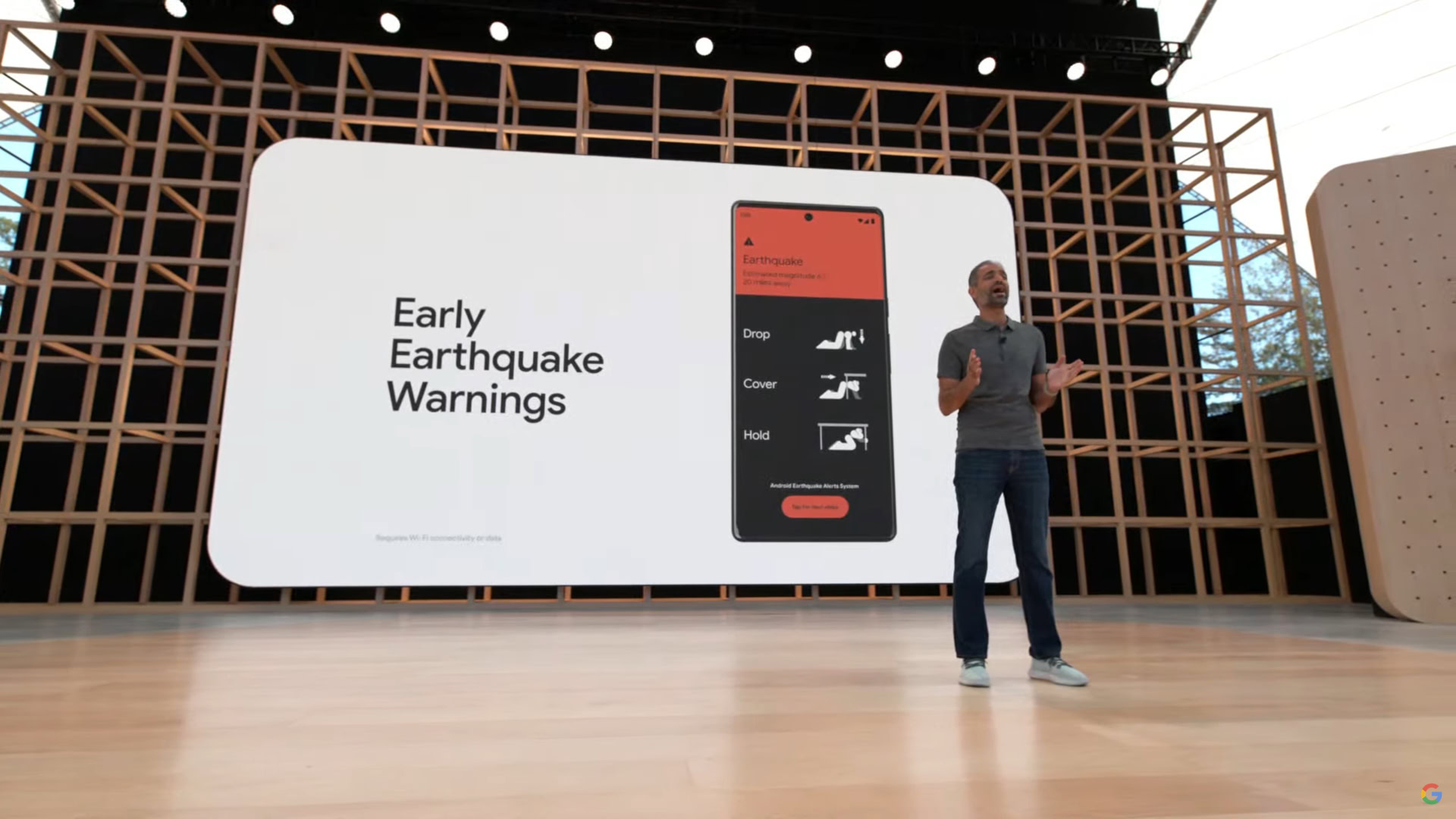TL;DR
- Google’s Android Earthquake Alerts system crowdsources data from smartphone accelerometers to detect seismic activity.
- The system has detected over 18,000 earthquakes and alerted millions across nearly 100 countries.
- Users receive crucial seconds of warning, enabling them to take protective action before shaking begins.
Google introduced Earthquake Alerts for Android devices back in 2020, and expanded the feature to cover all US states in September 2024. More recently, Google also expanded Android Earthquake Alerts to Wear OS smartwatches to warn you of seismic activity right on your wrist. But have you ever wondered if these alerts actually work? Do they do any good if they alert you a few seconds before an earthquake? As it turns out, crowdsourcing data from millions of Android smartphones to create the world’s most extensive earthquake detection system is a pretty good idea.
With the Android Earthquake Alerts system, Google turned the accelerometers in Android smartphones into a powerful, pocket-sized earthquake detection system. Over the last four years, this system has detected over 18,000 earthquakes and sent alerts to millions of people in nearly 100 countries, according to Google as well as the scientists over at Science.org (the online version of one of the world’s top peer-reviewed academic journals). These preemptive alerts give people crucial moments to distance themselves from dangerous objects and positions and take cover before the earthquake hits their location.
How does the Android Earthquake Alerts system work?
All Android phones come with an accelerometer, which is conventionally used to detect changes in motion and orientation to provide features like auto-rotation. As it turns out, the accelerometer can also detect the ground shaking from an earthquake. This data and the user’s coarse location are sent to Google’s earthquake detection server, which analyzes data from many phones in the coarse location to confirm that an earthquake is happening and estimates its location and magnitude.

The system then sends out alerts to users. These can either be a BeAware alert for estimated light shaking or a TakeAction alert, which takes over the phone’s screen and plays a loud sound for estimated stronger shaking.
How effective is the Android Earthquake Alerts system?

Google has said it has issued alerts for over 2,000 earthquakes, culminating in 790 million alerts sent to phones worldwide. This system has expanded the number of people with access to an Earthquake Early Warning system, going from 250 million in 2019 to over 2.5 billion in 2025.
During the magnitude 6.7 earthquake in the Philippines in November 2023, Google sent out the first alert just 18.3 seconds after the quake started. People closest to the epicenter received up to 15 seconds of warning, while those farther away got up to a minute. In this instance, nearly 2.5 million people were alerted to the earthquake before they could feel the shaking!
Similarly, for the magnitude 5.7 earthquake in Nepal in November 2023, the first alert was issued 15.6 seconds after the earthquake. People who experienced moderate to strong shaking had a warning time of 10 to 60 seconds, with over 10 million alerts delivered!
During Turkey’s magnitude 6.2 earthquake in April 2025, the first alert was issued eight seconds after the quake began. People who experienced moderate to strong shaking had a warning time of a few to 20 seconds, and over 16 million alerts were delivered. The animation below shows phones shaking as yellow dots, the yellow circle is the earthquake’s faster-moving P-wave, while the red circle is the earthquake’s slower, more damaging S-wave.
The animation shows the time in the upper left corner too, and you can see a wave of phones detecting shaking before the yellow circle until the red circle passes by, giving people precious seconds to take cover before the tremors hit.
Google has also continuously improved its magnitude estimation, with the median absolute error of the first magnitude estimate dropping from 0.5 to 0.25, making its accuracy the same or even better than traditional seismic networks.
Google also surveyed over 1.5 million people, and 85% found the alerts very helpful. Even when people don’t feel the shaking, they largely appreciate the warning to be alert about potential hazards. People who received a TakeAction alert commonly took action (namely “Drop, Cover, and Hold On”), further validating the alerts’ utility.

Sample size: 1,555,006 responses
Have you had an experience with the Android Earthquake Alerts system? What happened? Was the alert helpful, and were you able to get to safety? Please share your experience with us in the comments below!








